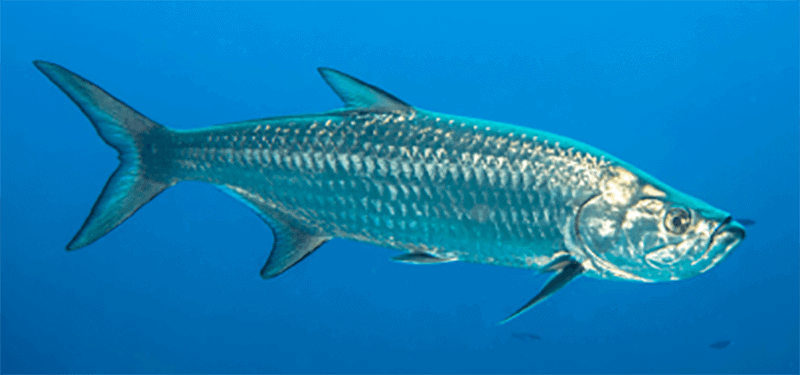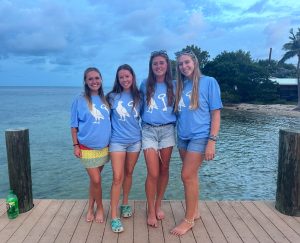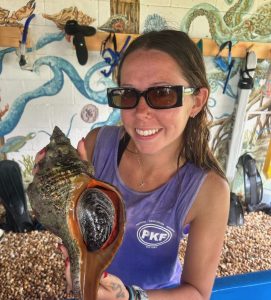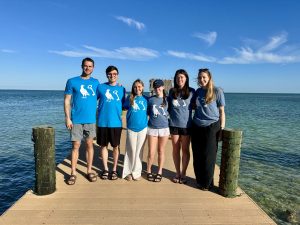The Atlantic Tarpon (Megalops atlanticus) is known as the “Silver King” of the Atlantic. Many an angler has had to tip their hats to the one-of-a-kind fighting spirit of tarpon. Here in the Middle Keys we begin to see these “Silver Kings” return around late February-March, with populations peaking in May and June. Every year anglers flock to the Keys to try and land one of their own, but a recent survey by the FWC says that only 37% of the tarpon that are hooked are successfully brought to the boat. This in turn brings more anglers out to pay homage to our masters of the sea. These awe-inspiring and aggravation causing fish bring in tourism and economic growth that we rely on out here, but where do they go once they pass the Old Seven Mile Bridge on their way North?
Tarpon are a long-lived species which can reach a ripe old age of 60 years or more, but according to the FWC, that behemoth reigning over the flats started its life over 100 miles offshore in the Gulf of Mexico. We still are not sure exactly where our kings and queens are spawning, but tarpon larve (leptocephali) start making their way to the estuaries from offshore waters anytime between April and August. The juvenile tarpon can be found in backwater mangrove habitats as they eat all that they can, growing at a rate of around 1 foot a year for the first years of their lives. In these environments with little oxygenated water, they have developed an ability to gulp air from the surface and are able to breathe using specialized tissues in their swim bladders. By 10 years of age these tarpon become sexually mature and begin their annual migrations. Tarpon tagged in Florida have been found to roam as far West as Louisiana and as far North as South Carolina, as they follow their choice of bait fishes. Each year they come through the Keys on their annual trip north. Though we don’t know much about their movements, we know they eventually make their way back South into offshore waters.
The tarpon have definitely made their way back to our quaint little island, and in pretty good numbers as well! Here on Pigeon Key, one of our cardinal programs is one called Invertebrate Biodiversity. After the lecture, the students have an opportunity to go snorkeling around the pilings of the Old Seven Mile Bridge looking for creatures to collect for our touch tanks. Recently, the tarpon have been regular sights for our students and they are often the highlight of the trip. Small tarpon have gathered on the southern tip of our island near our saltwater pool and our students can observe the magnificence of these Silver Kings in the wild. Some groups opt for a conservation angling program in which they learn about fishing and conservation of our fish stocks while on our dock. The joy that comes to their face when they see a tarpon roll or leap from the water, is what makes more and more kids come back each year to their favorite island in the Florida Keys. We can’t thank our tarpon enough and we will continue to educate our groups on this beautiful and economically important creature.




